A Women’s Traditional Saree is an iconic piece of attire that showcases India’s rich cultural heritage. Traditionally, the saree is worn at weddings, festivals, religious ceremonies, and formal occasions, and it has evolved into a symbol of grace, elegance, and timeless beauty. There are various types of traditional sarees, each with its own unique design, fabric, and style, making it suitable for different occasions and regions.
Types of Traditional Sarees:
-
Kanjeevaram Saree (Kanchipuram):
-
Fabric: Silk
-
Origin: Tamil Nadu
-
Features: Known for its rich, heavy silk fabric and intricate zari work, the Kanjeevaram saree is considered one of the finest traditional sarees. It is usually worn at weddings and grand celebrations.
-
Occasion: Ideal for weddings, formal events, and festive occasions.
-
-
Banarasi Saree:
-
Fabric: Silk (usually with zari or brocade weaving)
-
Origin: Varanasi (Uttar Pradesh)
-
Features: Banarasi sarees are famous for their intricate patterns, including floral motifs and elaborate zari work. They are known for their opulence and royal appeal.
-
Occasion: Perfect for weddings, festive occasions, and traditional ceremonies.
-
-
Chanderi Saree:
-
Fabric: Cotton, Silk, or a blend of both
-
Origin: Madhya Pradesh
-
Features: Chanderi sarees are lightweight, soft, and have a translucent texture. They often feature geometric patterns, floral motifs, and zari borders.
-
Occasion: Suitable for day events, summer weddings, and festive occasions.
-
-
Tussar Silk Saree:
-
Fabric: Tussar Silk (a natural silk produced from silkworms)
-
Origin: Various regions of India
-
Features: Tussar silk sarees are known for their rustic texture and natural golden sheen. They are often handwoven and feature simple, yet elegant designs.
-
Occasion: Ideal for traditional wear during festivals, temple visits, and casual wedding events.
-
-
Patola Saree:
-
Fabric: Silk
-
Origin: Gujarat
-
Features: Patola sarees are double-ikat woven, and they are known for their vibrant colors and geometric patterns. These sarees are labor-intensive and often very expensive due to the intricate hand-weaving technique.
-
Occasion: Perfect for weddings, cultural events, and celebrations.
-
-
Mangalagiri Saree:
-
Fabric: Cotton or Silk
-
Origin: Andhra Pradesh
-
Features: These sarees are made of fine cotton with traditional zari borders and simple, elegant designs. They are light yet durable.
-
Occasion: Ideal for festivals, temple visits, or casual traditional events.
-
-
Maheshwari Saree:
-
Fabric: Silk and Cotton blend
-
Origin: Madhya Pradesh
-
Features: Maheshwari sarees are light and versatile with geometric designs, floral motifs, and zari borders. They are suitable for both formal and casual occasions.
-
Occasion: Best for festive occasions, family gatherings, and celebrations.
-
-
Kasavu Saree:
-
Fabric: Cotton
-
Origin: Kerala
-
Features: Kasavu sarees are traditional white or off-white cotton sarees with a golden zari border. They are a popular choice for Onam and other Kerala festivals.
-
Occasion: Perfect for cultural festivals, religious ceremonies, and traditional celebrations.
-
Styling Ideas for a Traditional Saree:
-
Bridal Look: For weddings, Kanjeevaram or Banarasi sarees in rich colors like red, gold, and maroon are ideal. Pair them with heavy gold jewelry, including a maang tikka, jhumkas, necklace, and bangles. Style the saree with a neat bun adorned with flowers or traditional hairpins.
-
Festive Style: For festivals like Diwali, Durga Puja, or Navratri, consider a saree with intricate zari work or embroidery, such as Banarasi, Chanderi, or Patola. Pair with traditional jewelry like silver bangles, a statement necklace, and a decorative clutch.
-
Casual Traditional Look: For smaller traditional ceremonies or temple visits, a cotton saree like a Mangalagiri or Kasavu saree in neutral or pastel colors is perfect. Pair with simple jewelry like stud earrings and a delicate pendant, and choose flat sandals or traditional footwear.
-
Cultural or Classical Dance: Sarees for classical dance performances like Bharatanatyam, Odissi, or Kathak often include Kanjeevaram, Tussar silk, or heavy Banarasi sarees. The saree is draped in a specific style that complements the dance movements, often accompanied by temple jewelry.
-
Evening/Formal Occasions: For an elegant evening look, go for a silk saree like the Banarasi or Kanjeevaram saree in deep colors like royal blue, burgundy, or green. Complete the look with a sleek updo, traditional jewelry, and minimal makeup for a polished finish.

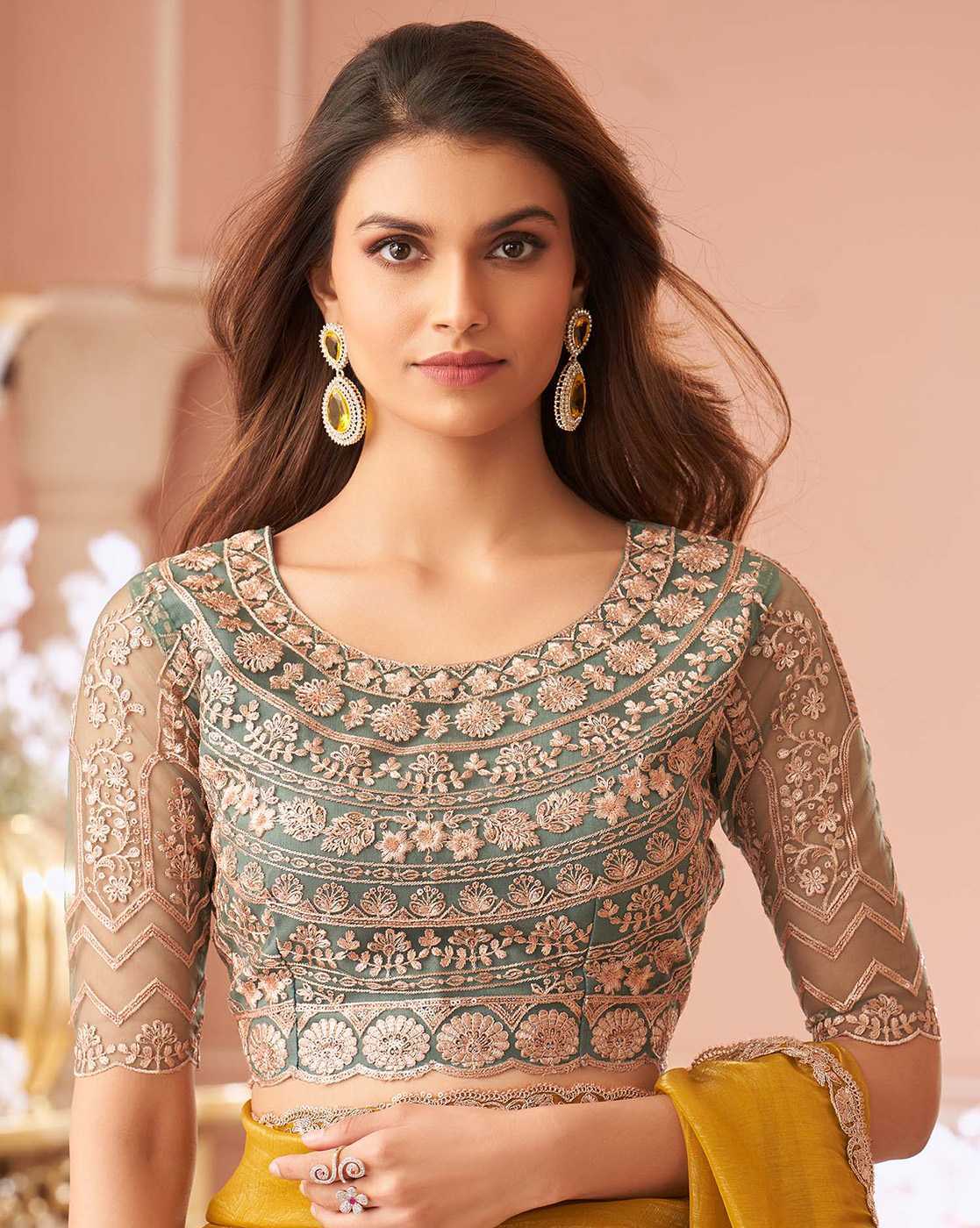
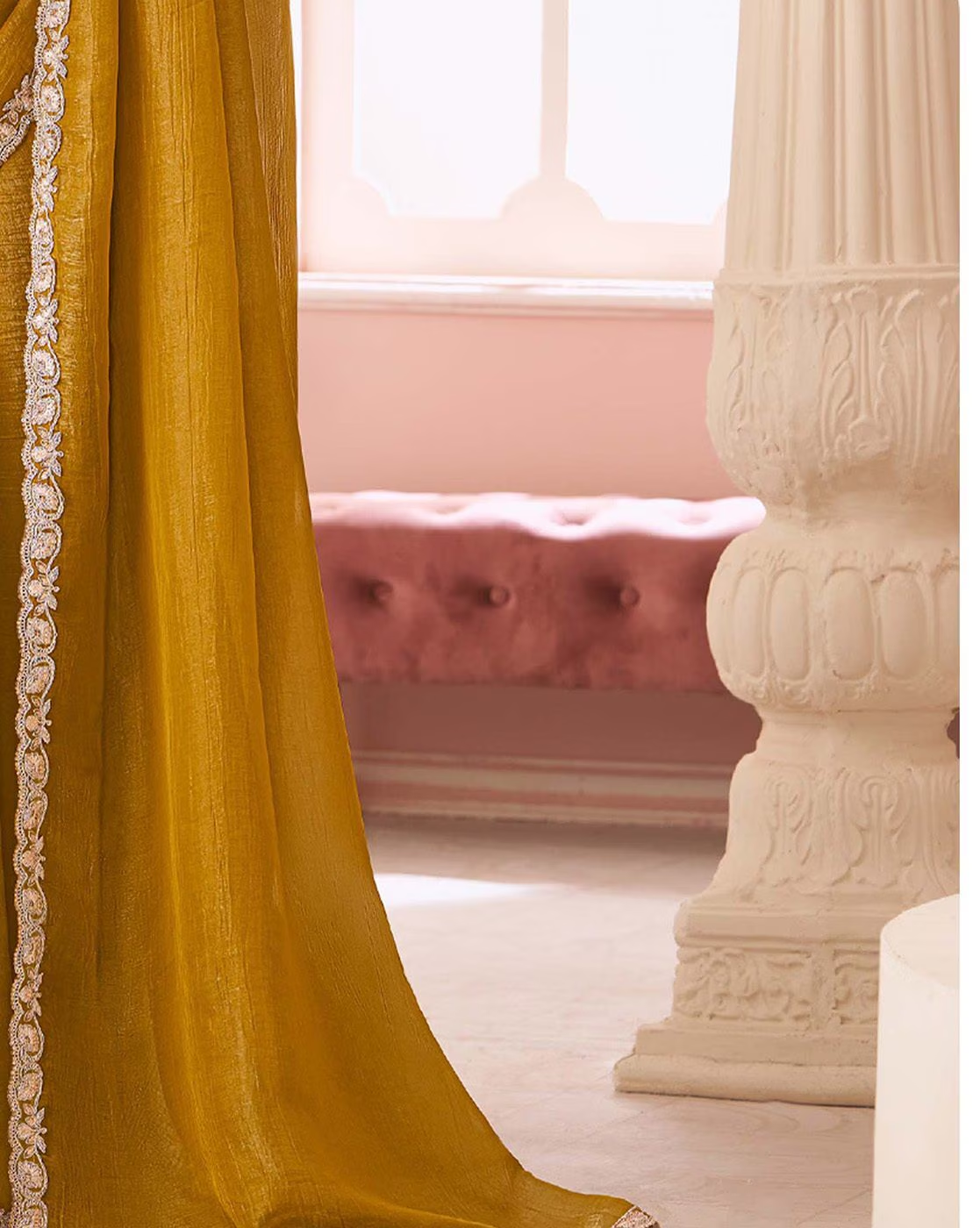
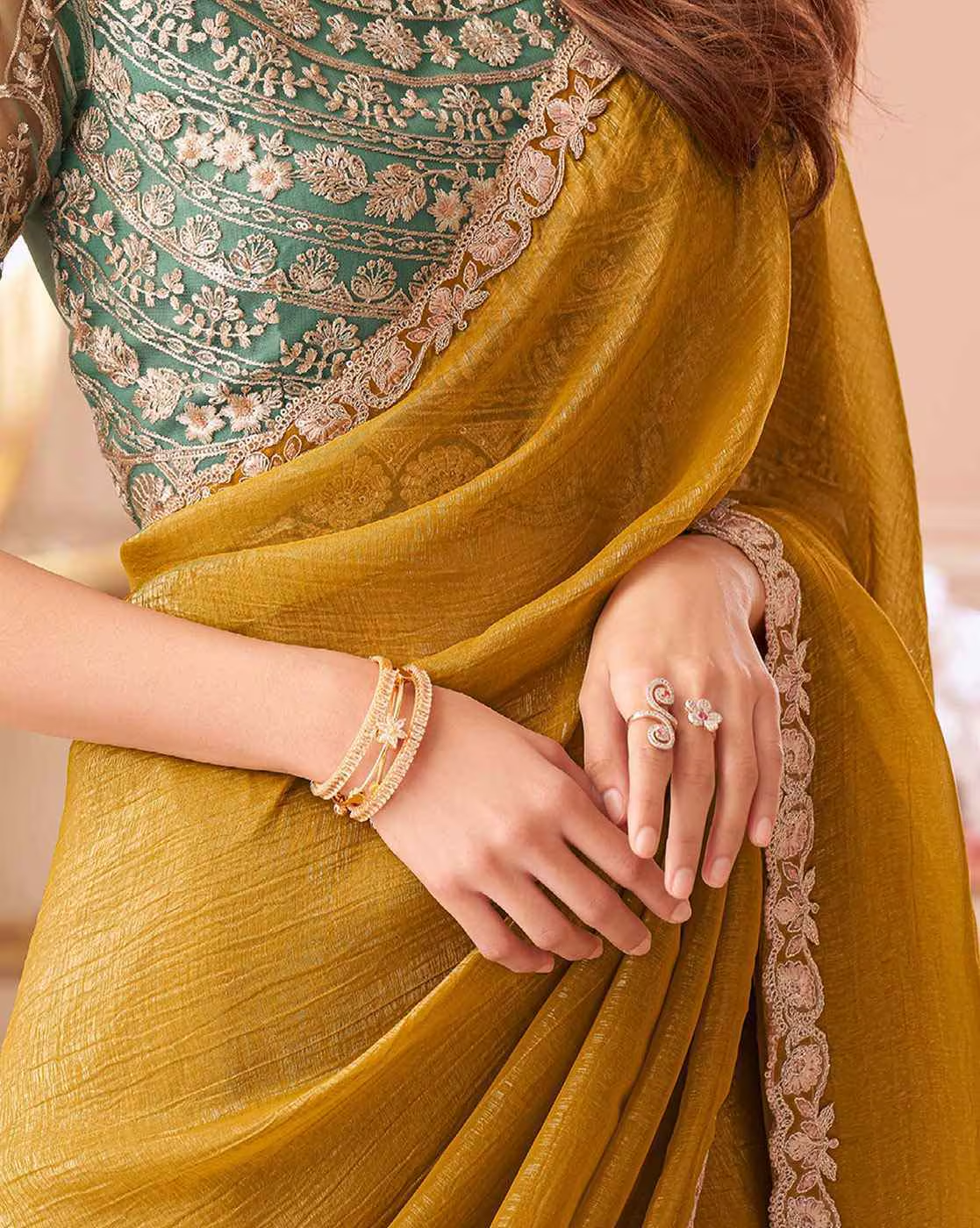
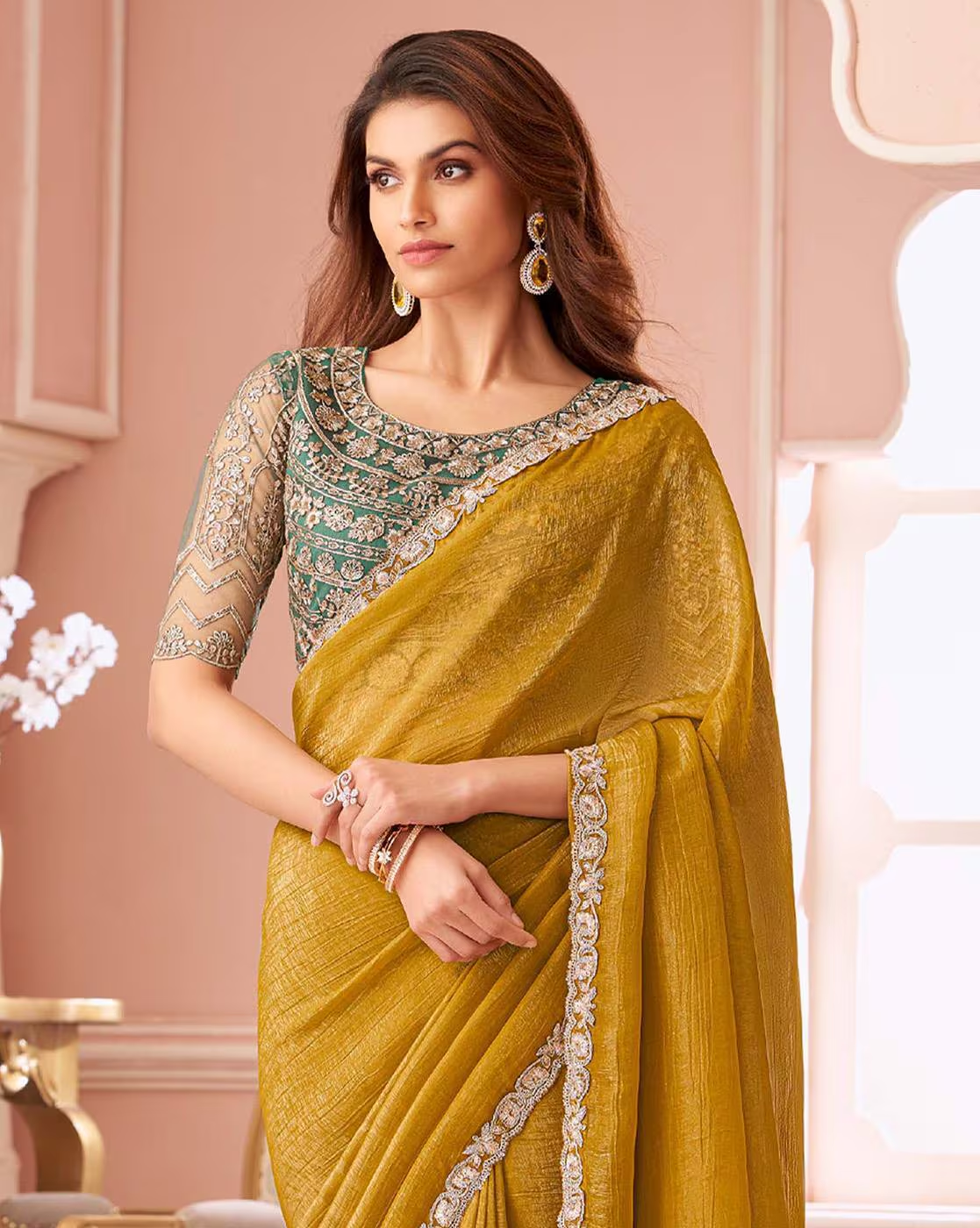



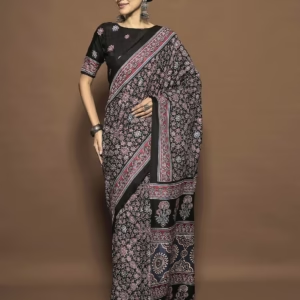
Reviews
There are no reviews yet.